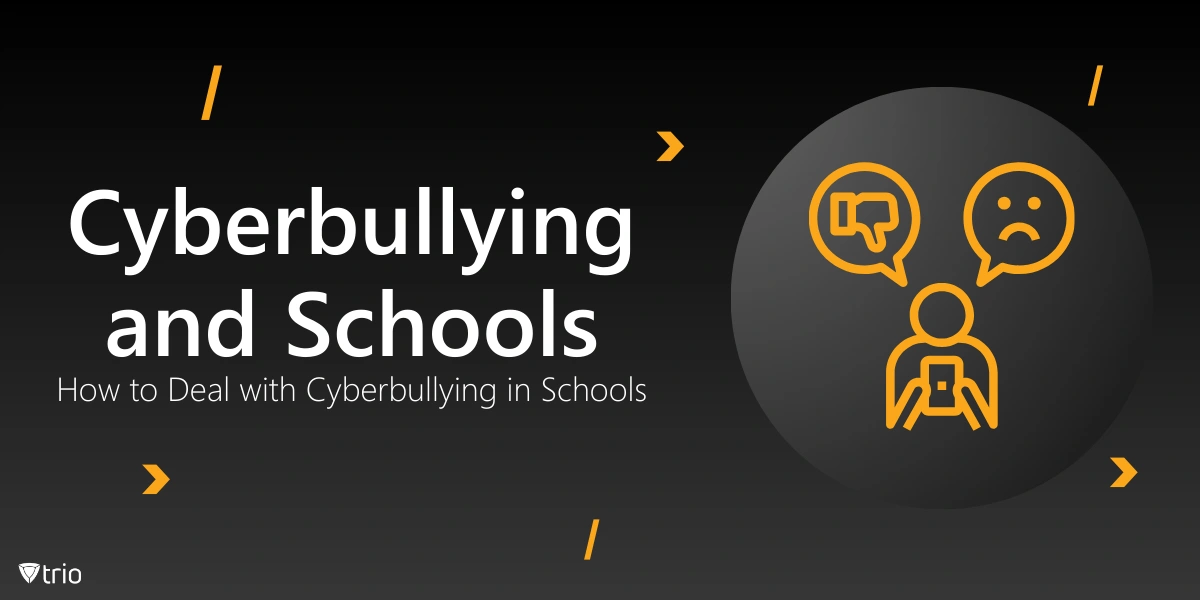The realm of bullying has transcended physical boundaries, manifesting in a pernicious form known as cyberbullying. As technology continues to permeate every aspect of our lives, educational institutions are grappling with this insidious phenomenon, which can have profound and lasting impacts on students’ well-being. This comprehensive guide delves into the intricacies of cyberbullying in schools, shedding light on its prevalence, unique characteristics, and the multifaceted strategies required to combat it effectively.
Understanding Online Bullying in Schools
Cyberbullying, a malicious act of intentionally inflicting harm or humiliation upon others through digital platforms, has become an increasingly prevalent issue within educational environments. Unlike traditional forms of bullying, cyberbullying can occur anytime, anywhere, and often anonymously, making it challenging to detect and address.
This pernicious behavior can manifest in various forms, including posting hurtful comments, spreading rumors, sharing embarrassing photos or videos, or even impersonating others online. The consequences of cyberbullying can be severe, ranging from emotional distress and social isolation to academic underperformance and, in extreme cases, self-harm or suicidal ideation.
Facts About Cyberbullying in Schools
The pervasiveness of cyberbullying in educational settings is alarming. According to the Cyberbullying Research Center, approximately 37% of students aged 12 to 17 in the United States have experienced cyberbullying at some point in their lives. Furthermore, nearly 25% of students reported encountering mean or hurtful comments online, while 22% faced the spread of malicious rumors in the digital realm.
These statistics underscore the urgency of addressing cyberbullying, as it can create a hostile and toxic environment that hinders students’ ability to learn and thrive.
Unique Characteristics of Cyberbullying
While all forms of bullying are detrimental, cyberbullying possesses distinct characteristics that exacerbate its impact. One of the most concerning aspects is its persistent nature, as students have constant access to technology, enabling bullying to occur around the clock, even within the supposed sanctuary of their homes.
Moreover, cyberbullying can be challenging to detect, as it often occurs covertly, away from the watchful eyes of adults. The anonymity afforded by digital platforms can embolden perpetrators, making them more brazen in their actions without fear of immediate consequences.
The potential for widespread dissemination is another alarming aspect of cyberbullying. With a single click, hurtful content can be shared with a vast audience, amplifying the harm and making it nearly impossible to contain or erase the digital footprint.
Examples of Cyberbullying in Schools with Cellphones
Cyberbullying can take various forms within educational settings, but most often they involve using cellphones. It is essential for educators, parents, and students to recognize these behaviors. Here are some common examples of cyberbullying in schools:
Social Media Harassment
Social media platforms have become breeding grounds for cyberbullying, where students may post hurtful comments, spread rumors, or share embarrassing photos or videos of their peers. This can lead to social isolation, emotional distress, and a hostile learning environment.
Online Impersonation
In some cases, cyberbullies may create fake social media accounts or online profiles to impersonate their targets, posting harmful or defamatory content in their name. This can damage the target’s reputation and lead to serious consequences, both online and offline.
Cyberstalking
Cyberstalking involves the use of technology to harass, intimidate, or threaten another individual repeatedly. This can include sending excessive messages, monitoring online activity, or making threats of physical harm, creating a climate of fear and anxiety for the target.
Exclusion from Online Groups or Chats
Cyberbullying can also involve intentionally excluding or isolating individuals from online groups, chats, or gaming communities. This form of social exclusion can be particularly damaging for students, as it can lead to feelings of loneliness, low self-esteem, and a sense of not belonging.
Sharing Sensitive or Explicit Content
In some cases, cyberbullies may share sensitive or explicit content, such as intimate photos or videos, without the consent of the individuals involved. This can lead to severe emotional trauma, reputational damage, and even legal consequences.

Addressing Cyberbullying in Schools: A Multifaceted Approach
Combating cyberbullying in educational settings requires a comprehensive and collaborative effort involving students, parents, educators, administrators, and the broader community. A multifaceted approach that encompasses prevention, intervention, and support is crucial to creating a safe and inclusive learning environment for all.
How to Prevent Cyberbullying in Schools and Cyberbullying Education in Schools
Proactive measures play a vital role in curbing cyberbullying before it takes root. Schools should prioritize digital citizenship education, teaching students about online etiquette, responsible technology use, and the consequences of cyberbullying. This can be achieved through dedicated curricula, assemblies, and workshops that foster empathy, respect, and ethical decision-making in the digital realm.
Additionally, schools can implement robust policies and procedures that clearly define cyberbullying, outline reporting mechanisms, and establish appropriate consequences for perpetrators. These policies should be regularly reviewed and updated to keep pace with the ever-evolving digital landscape.
Fostering a Positive School Culture
Cultivating a positive and inclusive school culture is paramount in addressing cyberbullying. Schools should promote values of kindness, respect, and empathy, encouraging students to be upstanders rather than bystanders when witnessing cyberbullying incidents.
Cyberbullying programs in schools, such as student ambassadors or mentorship programs, can empower students to take an active role in creating a supportive and inclusive environment. By fostering a sense of community and belonging, schools can nurture a culture that rejects cyberbullying and promotes digital responsibility.
Involving Parents and Guardians
Parental involvement is crucial in combating cyberbullying. Schools should actively engage parents and guardians, providing them with resources and guidance on monitoring their children’s online activities, recognizing signs of cyberbullying, and fostering open communication about digital safety.
Regular workshops, seminars, and informative materials can equip parents with the knowledge and tools necessary to support their children and collaborate effectively with educational institutions in addressing cyberbullying incidents.
Collaboration with Law Enforcement and Community Organizations
In severe cases of cyberbullying, involving law enforcement and community organizations may be necessary. Schools should establish clear protocols for reporting incidents that potentially violate local, state, or federal laws, such as stalking, harassment, or the distribution of explicit content.
Partnerships with community organizations, mental health professionals, and law enforcement agencies can provide valuable resources and expertise in addressing the legal, emotional, and psychological aspects of cyberbullying.
Implementing Effective Intervention Strategies
When cyberbullying incidents occur, swift and appropriate intervention is crucial. Schools should have well-defined protocols for investigating and documenting incidents, ensuring the safety and support of targeted students, and implementing disciplinary measures for perpetrators.
Restorative justice practices, such as mediation and conflict resolution, can be employed to foster understanding, accountability, and healing among all parties involved. Additionally, counseling and mental health support should be readily available to address the emotional and psychological impacts of cyberbullying.
Promoting Digital Literacy and Responsible Technology Use
Equipping students with digital literacy skills is essential in empowering them to navigate the online world responsibly and safely. Schools should incorporate digital citizenship education into their curricula, teaching students about online privacy, security, and the ethical use of technology.
By fostering a culture of responsible technology use, schools can proactively address cyberbullying and promote positive digital interactions among students.
Cyberbullying in Elementary Schools
While cyberbullying is often associated with older students, it can also occur in elementary school settings. As children gain access to technology at increasingly younger ages, the potential for cyberbullying increases.
In elementary schools, cyberbullying may manifest through text messages, online gaming platforms, or social media accounts accessed by younger siblings or family members. It is crucial for educators and parents to be vigilant and address cyberbullying promptly, as the emotional and psychological impacts can be particularly severe for younger children.
Cyberbullying in High Schools
High school students are often deeply immersed in the digital world, making them particularly vulnerable to cyberbullying. Social media platforms, messaging apps, and online forums can become breeding grounds for hurtful behavior, including the spread of rumors, sharing of explicit or compromising content, and cyberstalking.
Addressing cyberbullying in high schools requires a multifaceted approach that involves students, parents, educators, and community stakeholders. Fostering a positive school culture, implementing robust policies and procedures, and providing mental health support are essential components of an effective strategy.

How to Handle Cyberbullying in Schools
Schools play a pivotal role in addressing cyberbullying, as they are responsible for creating a safe and inclusive learning environment for all students. While cyberbullying may occur outside of school premises or after school hours, its impact can profoundly affect students’ academic performance, emotional well-being, and overall school experience.
By implementing comprehensive cyberbullying prevention and intervention strategies, schools can proactively address this issue and foster a culture of respect, empathy, and digital responsibility.
Strategies for Dealing with Cyberbullying in Schools
When cyberbullying incidents occur, schools must be equipped with effective strategies to address them promptly and appropriately. Here are some key strategies that educational institutions can implement:
Reporting and Documentation
Establishing clear reporting mechanisms and protocols for documenting cyberbullying incidents is crucial. Schools should provide multiple avenues for students, parents, and staff to report incidents, such as dedicated hotlines, online reporting forms, or designated staff members.
Thorough documentation, including screenshots, text messages, and witness statements, can provide valuable evidence and support in addressing the issue effectively.
Intervention and Disciplinary Measures
Schools should have a well-defined disciplinary policy that outlines appropriate consequences for cyberbullying behavior. This can include suspension, expulsion, or other disciplinary measures based on the severity of the incident.
However, it is essential to balance disciplinary actions with restorative practices, such as mediation and counseling, to foster accountability, healing, and long-term behavioral change.
Support and Counseling
The emotional and psychological impacts of cyberbullying can be severe, and schools must prioritize providing support and counseling services to affected students. This may include individual counseling, group therapy, or referrals to mental health professionals.
Additionally, schools should ensure that staff members, including counselors, social workers, and administrators, receive training on recognizing and responding to the signs of cyberbullying and its potential consequences.
Collaboration with Parents and Community
Addressing cyberbullying requires a collaborative effort involving parents, community organizations, and law enforcement agencies. Schools should establish open lines of communication with parents, providing them with resources and guidance on monitoring their children’s online activities and recognizing signs of cyberbullying.
Partnerships with community organizations and law enforcement can provide valuable support, resources, and expertise in addressing severe cases of cyberbullying that may involve legal implications.
Continuous Education and Awareness
Cyberbullying prevention and awareness should be an ongoing effort within educational institutions. Schools should regularly conduct educational campaigns, workshops, and assemblies to raise awareness about cyberbullying, its consequences, and strategies for prevention and intervention.
Incorporating digital citizenship education into the curriculum can also equip students with the knowledge and skills necessary to navigate the online world responsibly and ethically.
Educational Infographics
One of the best ways to foster awareness about cyberbullying in schools is using educational infographics about cyberbullying. If you are an educator or school administrator, these infographics can provide valuable sources of information for you. Moreover, you can use them in different forms such as educational posters to instruct your students.
For your convenience, we have gathered a series of cyberbullying infographics for schools that we invite you to download for free using the link below:
Download Free Cyberbullying Infographics for School

How Technology Can Help Schools
Technology can be a powerful ally for schools to tackle different educational challenges. Trio Education, for example, offers schools a comprehensive solution to tackle cyberbullying effectively:
- Enhanced Online Safety: Trio’s secure browsing feature minimizes distractions and protects students from online threats, creating a safer digital environment.
- Device Management: Schools can pair and monitor devices, ensuring students’ online activities are supervised.
- Detailed Reports & Alerts: Administrators receive comprehensive reports on school events, allowing quick identification of potential cyberbullying incidents.
- In-App Messaging: This feature enables seamless communication within the school community, facilitating prompt responses to cyberbullying concerns.
- Parent Involvement: Trio Education allows schools to invite parents, providing them insights into their child’s digital activities and fostering a collaborative approach to cyberbullying prevention.
By leveraging these features, schools can create a safer online environment, improve communication, and boost overall productivity. Trio Education empowers educators to proactively address cyberbullying, ensuring students can focus on learning without fear of online harassment.
Experience the difference Trio Education can make in your school’s cyberbullying prevention efforts. Start your free demo today and take the first step towards a safer digital learning environment for your students.
Conclusion: How to Stop Cyberbullying in Schools
Addressing cyberbullying within educational settings is a complex and multifaceted challenge that requires a comprehensive and collaborative approach. By implementing proactive prevention strategies, fostering a positive school climate, providing mental health support, engaging with stakeholders, and staying informed about emerging trends and technologies, schools can create a safe and inclusive learning environment for all students. It is a collective responsibility to ensure that the digital realm remains a space for growth, learning, and positive interactions, free from the harmful impacts of cyberbullying.
Know about news
in your inbox
Our newsletter is the perfect way to stay informed about the latest updates,
features, and news related to our mobile device management software.
Subscribe today to stay in the know and get the most out of your mobile
devices with our MDM solution app.
Recent Posts

Erase the Risk: Protect with Zero Standing Privileges
Learn how zero standing privileges eliminate persistent access rights, enhance data security and reduce the risk of unauthorized access.

Understanding Access Control Types in Cybersecurity w/ Examples
Thorough understanding of access control types & the knowledge to make informed decisions about implementing security measures in your organization.

Cloud Data Protection: Safeguarding Information in the Cloud
Learn essential strategies for robust cloud data protection, exploring tools, best practices, and policies that safeguard sensitive information.





